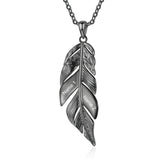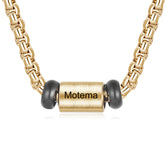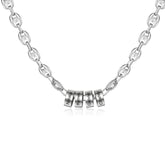Famous Jewelry & the Stories Behind Them
Some jewels are more than just beautiful — they’re unforgettable. Passed down through empires, hidden during revolutions, or cursed with tragedy, these legendary pieces of jewelry have witnessed the rise and fall of dynasties. Behind each one lies a story filled with mystery, power, and romance.
In this article, we explore the most iconic jewelry pieces in history, not just for their sparkle, but for the unforgettable tales they carry. From Cleopatra’s emeralds to Elizabeth Taylor’s pearls, you’re about to step into a world where luxury meets legacy.
Table of Contents
| Jewelry Piece | Historical Significance |
|---|---|
| The Hope Diamond | A cursed blue diamond tied to royal tragedy and misfortune |
| The Koh-i-Noor Diamond | A symbol of conquest and colonial power, now in British Crown Jewels |
| La Peregrina Pearl | A perfect pearl once owned by queens and Hollywood royalty |
| The Napoleon Diamond Necklace | Commissioned by Napoleon as a symbol of empire and love |
| The Black Orlov Diamond | A mysterious gem rumored to carry a deadly curse |
| Marie Antoinette’s Earrings | Survived the French Revolution and resurfaced at auction |
| Cleopatra’s Emeralds | Ancient Egyptian emeralds tied to diplomacy and legacy |
The Hope Diamond
What is the Hope Diamond and why is it famous?
The Hope Diamond is a rare 45.52-carat blue diamond known not only for its breathtaking beauty but also for the mysterious curse said to follow its owners. It currently resides at the Smithsonian Institution in Washington, D.C.
The Story
The Hope Diamond began its journey in the Golconda mines of India, where it was first recorded as part of a larger stone called the Tavernier Blue. French gem merchant Jean-Baptiste Tavernier brought it to Europe in the 1660s, where it was eventually sold to King Louis XIV. The king had it cut into a heart-like shape and set into royal adornments.
After the French Revolution, the diamond disappeared, only to resurface years later in London. Over time, the Hope Diamond developed a reputation for bad luck. Owners reportedly suffered misfortunes ranging from bankruptcy to premature death. Its final private owner, jeweler Harry Winston, donated it to the Smithsonian in 1958 — where it has remained ever since, drawing millions of fascinated visitors each year.
The Koh-i-Noor Diamond
What is the significance of the Koh-i-Noor?
The Koh-i-Noor is one of the largest and most contested diamonds in the world. Its name means “Mountain of Light” in Persian, and its journey has taken it through the hands of sultans, emperors, and monarchs. Today, it is set in the British Crown Jewels.
The Story
The earliest known reference to the Koh-i-Noor dates back to the 13th century, but it gained fame under the rule of the Mughal Empire in India. Emperor Babur and his successors treasured the diamond as a symbol of divine rule. Eventually, it was captured by the Persian Shah Nader in 1739 during his invasion of Delhi and carried to Persia.
Through more conflict and conquests, the diamond made its way to the Sikh Empire and ultimately fell into British hands in 1849 when the British East India Company annexed Punjab. Queen Victoria had it recut for a more “European” aesthetic and wore it as a brooch. Although the diamond is displayed publicly today in the Tower of London, its ownership remains a point of international controversy — with India, Pakistan, Iran, and Afghanistan all having laid claim to its return.
La Peregrina Pearl
What makes La Peregrina so legendary?
La Peregrina is one of the most perfect natural pearls ever discovered. Pear-shaped and nearly flawless, it has passed through the hands of Spanish monarchs, English queens, and one of Hollywood’s most iconic couples.
The Story
Found by an enslaved African diver off the coast of Panama in the 16th century, the pearl was quickly recognized for its exceptional size and shape. It was presented to King Philip II of Spain, who gave it as a gift to Queen Mary I of England. Over centuries, it remained in the Spanish royal family, appearing in portraits and royal inventories.
Its next chapter took a glamorous turn when actor Richard Burton purchased the pearl for Elizabeth Taylor in 1969, paying $37,000 — a fortune at the time. Taylor had it reset into a stunning necklace with rubies and diamonds. After her death, the piece sold at auction for over $11 million, sealing its place as one of the most storied jewels in modern history.
The Napoleon Diamond Necklace
Why is this necklace important in history?
The Napoleon Diamond Necklace is a lavish piece created in the early 19th century, featuring 234 diamonds. It was a gift from Napoleon Bonaparte to his second wife, Marie Louise, as both a symbol of affection and political triumph.
The Story
In 1811, after his divorce from Josephine, Napoleon married Marie Louise of Austria to secure a political alliance. When she gave birth to a son — Napoleon II — he commissioned an extraordinary necklace to celebrate the event and honor his empress.
The necklace was crafted by the Parisian jeweler Etienne Nitot and included large cushion-cut and pear-shaped diamonds. After Napoleon’s fall, the necklace remained with Marie Louise and eventually made its way into the Habsburg family treasury. In the 20th century, it surfaced again and was donated to the Smithsonian, where it remains a highlight of the museum’s gem collection.
The Black Orlov Diamond
Is the Black Orlov Diamond really cursed?
The Black Orlov Diamond, a 67.5-carat dark gem, is said to be cursed — a legend that began with its rumored theft from a Hindu temple in India. Its owners include Russian royalty and American socialites, some of whom met mysterious ends.
The Story
According to legend, the original stone was part of a 195-carat black diamond set in the eye of a Brahma statue. After being stolen, it supposedly brought tragedy to its possessors. One of its most famous owners, Princess Nadia Orlov, allegedly leapt to her death in the 1930s — contributing to the diamond’s dark reputation.
To dispel the curse, later owner Charles F. Winson had the diamond recut into three pieces. The largest retained the name “Black Orlov” and was reset into a brooch and diamond necklace. Despite its sinister story, the gem continues to fascinate collectors and gemologists alike. It has been exhibited around the world and is now considered one of the most enigmatic diamonds in existence.
Marie Antoinette’s Earrings
What happened to Marie Antoinette’s jewelry?
During the French Revolution, much of Marie Antoinette’s jewelry vanished. But her legendary diamond earrings survived — hidden by loyalists and passed down through European aristocracy until they re-emerged at a Sotheby’s auction in 2018.
The Story
As tensions escalated in revolutionary France, Marie Antoinette entrusted some of her jewelry to a confidant, hoping to protect it from seizure. Among these were her diamond earrings, which disappeared from public record for more than two centuries. Historians long debated their fate.
In 2018, a pair of diamond earrings believed to have belonged to the queen went to auction, authenticated through the Bourbon-Parma family lineage. They fetched over $36 million, making them one of the most expensive royal jewels ever sold. Their survival offers a rare, tangible link to a world that vanished in revolution and fire.
Cleopatra’s Emeralds
Did Cleopatra really wear emeralds?
Yes. Cleopatra not only wore emeralds but may have controlled Egypt’s earliest known emerald mines. These vivid green stones were central to her personal image and political symbolism.
The Story
The ancient queen of Egypt was known for her dramatic entrances and unforgettable fashion. But emeralds were more than style — they were strategy. Cleopatra presented them as gifts to visiting dignitaries, used them in diplomatic exchanges, and carved her likeness into the stones themselves.
Archaeologists have since discovered what are believed to be Cleopatra’s mines in Egypt’s Eastern Desert. While the exact gems she wore are lost to time, their legend continues to inspire — from modern replicas in museums to Hollywood’s many retellings of her dramatic life.
Frequently Asked Questions
What is the most famous piece of jewelry in history?
The Hope Diamond is often considered the most famous due to its rare blue hue, massive size, and legendary curse. However, the Koh-i-Noor holds greater historical and geopolitical significance.
Who originally owned the Koh-i-Noor?
The diamond’s early origins trace back to India’s Kakatiya dynasty. Over centuries, it passed through Mughal emperors, Persian shahs, Afghan rulers, and eventually the British Crown.
What jewelry piece was worn by Elizabeth Taylor?
Elizabeth Taylor owned La Peregrina Pearl, a 16th-century gem she received from Richard Burton. She had it reset into a necklace with rubies and diamonds, turning it into one of Hollywood’s most iconic jewels.
What jewel is known for being cursed?
Both the Hope Diamond and the Black Orlov are linked to tales of misfortune, death, and curses. Their histories include mysterious tragedies that keep their legends alive today.
Where can I see these famous jewels today?
- Hope Diamond – Smithsonian Museum, Washington D.C.
- Koh-i-Noor – Tower of London, part of the British Crown Jewels
- Napoleon Diamond Necklace – Smithsonian Institution
- Marie Antoinette’s Earrings – Privately owned, sold at Sotheby’s
- La Peregrina Pearl – Sold at auction; current private owner unknown
Final Thoughts
These jewels have survived empires, revolutions, and royal downfalls — not just because of their value, but because of the stories they carry. Behind every carat is a chapter of history, wrapped in mystery, power, and timeless beauty.
Whether displayed in museums or lost to private collections, these legendary pieces remind us that jewelry is more than accessory — it’s legacy.

















